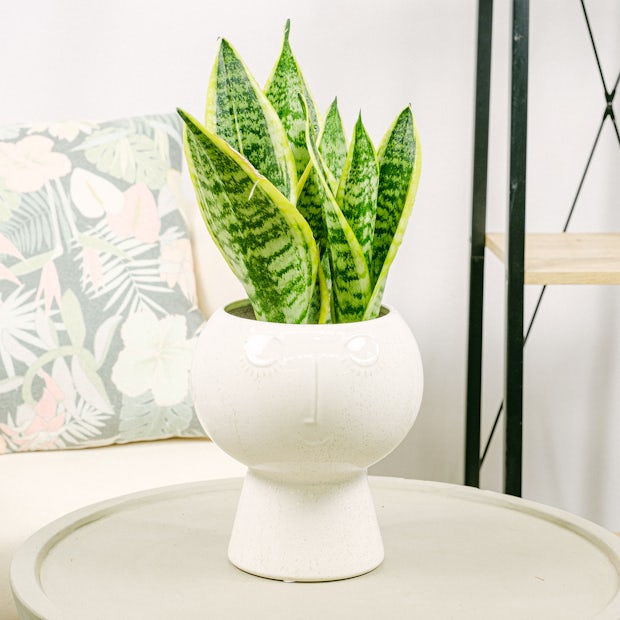When I first started working, I was put in a closed office. It was a windowless room, with air conditioning running full blast and white lights. In all innocence, I chose a cactus because “it’s a hardy plant” and watched it die. I resigned myself to not having plants, but I always wondered if plants could grow with artificial lighting. Is it possible to have plants in an enclosed space without natural light?
The short answer is yes: yes, artificial lighting can help your plants grow, but not just any lighting. Light from halogen bulbs in an office will never be enough for a cactus to survive, but it can work for other species. Let’s start by explaining this process a bit, trying not to get too technical.

Contents
Light and plants
Plants need sunlight to perform the process of photosynthesis, with which they produce their own food. Sunlight has certain characteristics that affect the growth of plants. Light is a form of electromagnetic radiation with its own wavelength. There are many types of radiation of which we humans perceive only a small part because our eyes are not able to see them in their entirety. This is why we see sunlight as white, but if we put it through a prism, we see that it has multiple colors.
Sunlight encompasses the entire spectrum of light, with all the colors of the rainbow; and although plants require all of them, there are two colors that are very important: blue and red (because green is the one that plants do not absorb). Blue is responsible for the growth that occurs at germination and after flowering. If a plant receives only this type of light, it will not grow much and its color will darken.
Red is involved in the elongation of the plant’s stem and determines its flowering, as it tells the plants how long the days are. Too much red will result in a very tall plant with more distance between its leaves. If you combine blue and red, the plant’s flowering is stimulated.
So, when trying to artificially provide light to a plant, you need to be very careful about the type of bulb you use, as some offer a more limited light spectrum or are not suited to the plant species. Moreover, the light of a simple light bulb for domestic use will rarely be sufficient for a plant with high light needs, so you will have to invest in a special lamp.
Under the spotlight: artificial lighting and plant growth
There are many artificial lights for houseplants on the market. They can be used to compensate for the length of the day (for example, in countries that, due to their geographical location, experience a very pronounced change in the length of the day at certain times of the year) or the total absence of natural light. You can find a lot of different types of bulbs, but unless you want to do this professionally, you can use broad spectrum bulbs, which combine a cold LED and a warm LED. The advantage of these bulbs is that they offer a fairly decent spectrum, give off little heat and consume little electricity.
Be careful with the intensity of the artificial light, which is determined by the wattage of the bulb and its proximity to the plant. Be very careful with the type of lamp or bulb you use and its proximity to the plant, as incandescent lamps tend to get very hot and can burn its leaves. This is why it is advisable to buy fluorescent or LED lamps.
The intensity requirements will be determined by the species of the plant. Houseplants from tropical forests do not need much light, unlike those from dry areas, such as cacti.
As a guide: if your plant has flowers (like violets, begonias and others), you can place it about 20-30 cm from the lamp. If it is a foliage plant, such as ivy or philodendron, they can be about 90 cm from the grow lamp. If you want to have a plant with a lot of flowers and that gives fruits, it needs a more intense light in order to maintain its growth and reproduction cycle.
What if I don’t want to buy a specific artificial light?
If you don’t want to invest in a specific bulb for your plant, you can always look for a species that requires minimal lighting and will be very happy with the little light it can get from the fluorescent or LED bulbs in your office.
Within this group, I recommend getting a Sansevieria. These beautiful plants are nearly immortal, and while they love the sun, they can adapt to low light locations. Peace Lily is another delightful option. This plant eliminates spores and clears the air. Dracaenas are hardy plants that defy all odds and can grow well in dark places as well.
Another plant that can decorate your office is the Zamioculcas or ZZ plant that also prefers low light areas.
Nevertheless, each location has its own characteristics. You can hold your plant in your hands and observe it regularly to see if you need to change its position, watering and lighting. It will surely appreciate if you take it out from time to time to a place where it can enjoy a few hours of sunlight.

